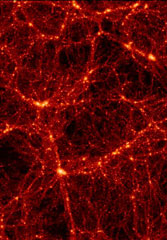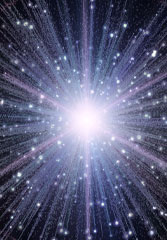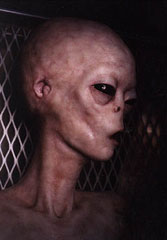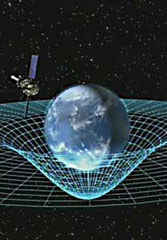
The History Channel has significantly changed in the last couple of years in a way I could never imagine. It became something that actually made me interested in history. Now, I’m not one to get in to the history of the Civil War like my Father in Law or the many battles of the Nazis vs USA in WW2. I’m hooked on this little show called The Universe. It’s brought me back to my childhood and made me want to be an astronaut all over again. It’s given me new ways to fantasize about traveling to far off galaxies to meet those little green men we all know so well. But most of all its given me a new perspective on life.
The Universe is a extremely big place and we are really really really small in comparison. Now, I know that a lot of this show is theoretical, but with technology today (stuff I know nothing about ) scientist can get a pretty clear idea of how and when existence began. They have come to several conclusion on how our earth and moon was originally created, how our solar system was originally created and how our universe was originally created. Not to mention how old they are and their history. How about when life first began on earth and the chances of similar life on other planets.
I love things that push my way of thinking. Things that stretch my brain to new boundaries. Things that make me see things clearer and in a new light. This show does just that in so many ways. Here are three of my favorite episodes: |
 |
Mars. The Red Planet
This episode is awesome because it talks about possible water and possible life on Mars. Plus, it looks at our chances of possibly traveling to mars.
Mars is the planet in our solar system most similar to Earth despite otherworldly features such as the largest volcano in the Solar System. NASA orbiters and rovers discover new evidence of frozen water just beneath the rusty soil. Cutting-edge computer graphics are used to show what life would be like on Mars, and to imagine what kind of life forms might evolve in alien atmospheres. |
 |
Dark Matter
Scientists have no idea what it is, but Dark Matter and Dark Energy make up 96% of the Universe. Dark Matter is everywhere. It passes through everything we know on earth at billions of particles every second, yet no one has ever gotten a direct detection of this mysterious dark substance. An even more bewildering force is Dark Energy, which is rapidly pushing apart our Universe. Discovered only ten years ago, scientists are struggling to comprehend its unusual characteristics and answer the ultimate question; what is the fate of our Universe? Using cutting-edge computer graphics watch as the universe is brought down to earth.
Maybe this shit is God? It holds the universe together. |

|
Beyond the Big Bang
The universe began with a massive expansion, billions and billions of years ago, and it continues to expand with every passing second. The idea that the universe, and man’s very existence, began with a “Big Bang” is no longer a topic of debate among most scientists–it is essentially taken as fact. How has man come to this conclusion, and how has our knowledge evolved so that we can recreate the very first seconds of our universe and all that has developed since? Interviews with the world’s leading physicists and historians are woven together with animated recreations and first-person accounts to explain concepts such as the formation of galaxies, the creation of elements and the formation of Earth itself. |
 |
Search for ET
In a galaxy filled with a billion stars, in a universe filled with a hundred billion galaxies–are we alone? SETI–the Search for Extraterrestrial Intelligence–is a privately funded project using radio telescopes and optical telescopes to scan the stars for signals. NASA is planning missions to Mars, Jupiter’s sixth moon, Europa, and Saturn’s largest moon, Titan, to look for primitive, microbial life in ice concentrations. Whether we discover primitive or intelligent life, how will that knowledge impact humankind’s view of itself? Cutting-edge computer graphics are used to bring the universe down to earth to show what life would be like on other planets, and to imagine what kind of life forms might evolve in alien atmospheres. |
 |
Gravity
Gravity is the most powerful and exacting force in the universe. It is pervasive and penetrating. Gravity binds us together, its reach hangs stars in the sky and its grip crushes light. Gravity holds planets together, and leashes them to their suns. Without gravity, stars, comets, moons, nebulae, and even the Earth itself would not exist. Explore how science and humanity discovered, overcame and utilized gravity. Learn what it takes to propel objects into the heavens, to ride a wave or to ski down a slope. Take a front row seat as an astronaut subjects himself to the weightless wonders of the specially modified aircraft used to train astronauts known as the “Vomit Comet.” |